Prospecting & Detecting
Strategies for Detecting Heavily Pounded Areas—Pt II
May 2022 by Reese Townes
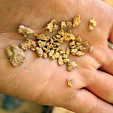 Look around for areas where you don’t see detector holes or drywasher piles and try your test hole at these spots to determine depth to bedrock.
Look around for areas where you don’t see detector holes or drywasher piles and try your test hole at these spots to determine depth to bedrock.
Benefits of a Detecting Partner
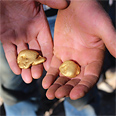 “Metal detecting is not a social function.” So said a good friend of mine. And it’s true. But that’s not to say the benefits of having a prospecting partner don’t outweigh those of being alone.
“Metal detecting is not a social function.” So said a good friend of mine. And it’s true. But that’s not to say the benefits of having a prospecting partner don’t outweigh those of being alone.
Using Favorable Rock Types to Find More Gold
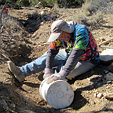 The more experienced prospectors know these lesser known spots are the types of places where big finds are still made.
The more experienced prospectors know these lesser known spots are the types of places where big finds are still made.
Time to Stake Your Own Mining Claim
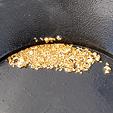 So let’s dive in and see what I can do to convince you that this is the year you should be out staking your own claims.
So let’s dive in and see what I can do to convince you that this is the year you should be out staking your own claims.
How Do I Recover Gold In Black Sands?
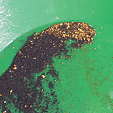 Prospectors deal with black sands in lots of different ways. I know that some prospectors worry about getting every speck of gold and save black sands in buckets until they have hundreds of pounds.
Prospectors deal with black sands in lots of different ways. I know that some prospectors worry about getting every speck of gold and save black sands in buckets until they have hundreds of pounds.
Gold in The Midwest--Part I
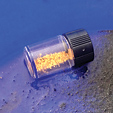 Gold can potentially be found in all the glaciated areas of the Midwest, but to find it in any appreciable amount one needs to look to areas where the gold gets concentrated by more recent water flows.
Gold can potentially be found in all the glaciated areas of the Midwest, but to find it in any appreciable amount one needs to look to areas where the gold gets concentrated by more recent water flows.
Proper Assaying of Placer Samples
The whole purpose of sampling mineralized ground is to measure the values in a small volume of material that would be representative of a much larger volume of similar material. The key word is representative. Chemical and fire assaying will not accurately represent placer deposits by themselves.
Subscription Required:
The Bawl Mill
• Legislative and Regulatory Update
• Ask The Experts - How are gold veins formed?
• Ask The Experts - Is there gold in Monterey County, California?
• Ask The Experts - Can you explain NMR and satellite imagery?
• Ask The Experts - What other indicators are there besides red soils?
• Mineralization, Ground Balance and Metal Detecting
• Gold Prospecting for Better or Worse: Warning Signs
• What To Do With All That Gold?
• Proposed 100-Mile Road in the Yentna Mining District
• All About Trommels and Screens for Placer Gold Recovery
• Judge Orders FBI to Produce Records on Civil War Gold Hunt
• Auburn, California
• Old Water Channels Provide Important Clues
• The Mystery of the Grand Summit Mine
• Melman on Gold & Silver
• Mining Stock Quotes and Mineral & Metal Prices
Free:








